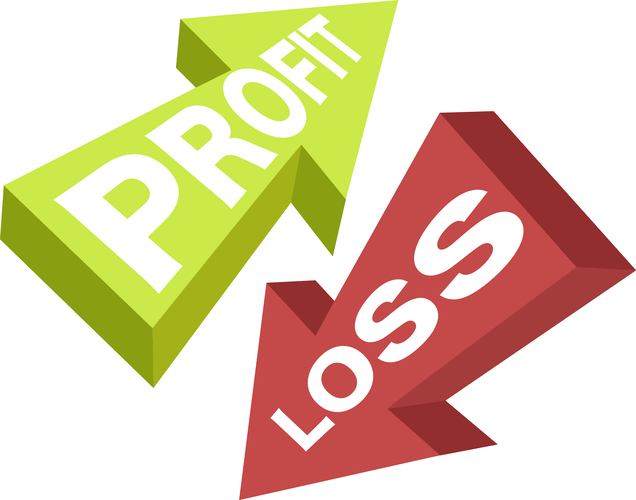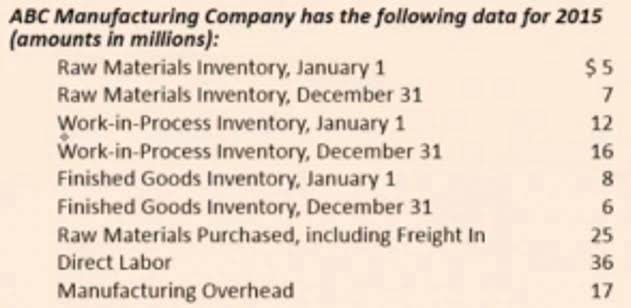
The company takes up the obligation because it believes these obligations will provide economic value in the long run. Liability in simple words is the loan that the company has taken, and it is obligated to repay. Typical examples Is a bank loan a current liability? If so, why? of obligation include short term borrowing, long term borrowing, payments due etc. We will discuss the kinds of liabilities later on in the chapter. An expense is the cost of operations that a company incurs to generate revenue.

A financial obligation can be a payment of money, goods or services. If the money owed is for repayment of a loan, such as a mortgage or an equipment lease, https://accountingcoaching.online/ then the liability is a debt. Current liabilities are usually obligations for goods and services acquired, and taxes owed, and other accruals of expenses.
Current Liabilities Explained In Less Than 5 Minutes
Still, accountants and investors may investigate these to ensure that a company is financially healthy. The higher the total liabilities, the more money the company needs to make to pay off its debts and make a profit.
- As the cash is received, the cash account is increased and unearned revenue, a liability account, is increased .
- Clearly, as you can see, these are short-term loans available from the State bank of India and Andhra Bank towards meeting the working capital requirements.
- A financial obligation can be a payment of money, goods or services.
- It is divided into three major sections known as assets, liabilities, and equity.
- Although the depositor can withdraw the money before the CD expires, banks charge a hefty fee for this.
The Board has now clarified that – when classifying liabilities as current or non-current – a company can ignore only those conversion options that are recognised as equity. Let’s look at some common types of non-current liabilities that are reported on balance sheets. Long-term liabilities are crucial in determining a company’s long-term solvency.
If you run a business, it’s helpful to run cash flow statements regularly to track your progress and look for areas where you may need to adjust spending. If you’re an investor, cash flow statements serve as a guide when selecting companies to invest in. If you are a manager, investor or creditor evaluating a business by looking at its current liabilities, you may want to consider consulting with an experienced financial advisor. Finding the right financial advisor who fits your needs doesn’t have to be hard. SmartAsset’s free tool matches you with financial advisors in your area in five minutes.
Board Of Governors Of The Federal Reserve System
All such information is provided solely for convenience purposes only and all users thereof should be guided accordingly. US Treasury bills, for example, are a cash equivalent, as are money market funds. Cash equivalents are any type of liquid securities that are not in the form of cash currently, but that will be in the form of cash within a year.
- I looked through Exide Annual Report and I have highlighted the required things for you.
- Long-term liabilities are those that come due over a longer time frame.
- As part of the requirements for getting a small business loan, the financial health of your company in the short-term and long-term will be considered.
- A bank must hold some cash as reserves, which is the amount of money held in a bank’s account at the Federal Reserve .
Unless the company operates in a business in which inventory can be rapidly turned into cash, that may be a sign of financial weakness. Adding the short-term and long-term liabilities together helps you find everything that is owed. As a last resort banks can also borrow from the Federal Reserve , though they rarely do this since it indicates that they are under financial stress and unable to get funding elsewhere. However, during the credit freeze in 2008 and 2009, many banks borrowed from the Fed because they could not get funding elsewhere.
Liabilities: Sources Of Funds
Well-managed companies attempt to keep accounts payable high enough to cover all existing inventory. The difference between these is the company’s working capital.
Current liabilities are the company’s obligations to settle within 365 days /12 months of the balance sheet date. Clearly, as you can see, these are short-term loans available from the State bank of India and Andhra Bank towards meeting the working capital requirements. It is interesting to note that the short term borrowing is also kept at a low level, at just Rs.8.3Crs. The total shareholders’ fund is a sum of share capital and reserves & surplus. Since this amount on the balance sheet’s liability side represents the money belonging to shareholders’, this is called the ‘shareholders funds’.
In that case, it is in a strong position to weather unexpected changes over the next 12 months. Liabilities are either the deposits of customers or money that banks borrow from other sources to use to fund assets that earn revenue. Deposits are like debt in that it is money that the banks owe to the customer but they differ from debt in that the addition or withdrawal of money is at the discretion of the depositor rather than dictated by contract. Below are examples of non-current liabilities on the balance sheet. An underfunded plan, and disclosures to that effect have to be included in financial statements, generally in the footnotes.
- There may be footnotes in audited financial statements regarding past due payments to lenders, but this is not common practice.
- Now add together all the amounts owing for the reporting period to find total current liabilities.
- Long term borrowing is one of the most important line items in the entire balance sheet as it represents the amount of money that the company has borrowed through various sources.
- By thinking this way, you are in fact separating the shareholders’ and the company.
- Most accounts payable items need to be paid within 30 days, although in some cases it may be as little as 10 days, depending on the accounting terms offered by the vendor or supplier.
- Classified as available-for-sale is shown as an increase or decrease in the book value of equity in the balance sheet.
Mary Girsch-Bock is the expert on accounting software and payroll software for The Ascent. A capital lease refers to the leasing of equipment rather than purchasing the equipment for cash. Contingent liabilities are only recorded on your balance sheet if they are likely to occur. A company classifies a liability as non-current if it has a right to defer settlement for at least twelve months after the reporting period. As part of its amendments, the Board has removed the requirement for a right to be unconditional and instead, now requires that a right to defer settlement must have substance and exist at the end of the reporting period.
How Is A Short Term Bank Loan Recorded?
Savings deposits of yore were mostly passbook savings accounts, where all transactions were recorded in a passbook. The second principle is that the value of both liabilities and equity in a firm arebetter estimated using historical costswith accounting adjustments, rather than with expected future cash flows or market value. The process by which accountants measure the value of liabilities and equities is inextricably linked to the way they value assets. Because assets are primarily valued at historical cost or at book value, both debt and equity also get measured primarily at book value. In what follows, we will examine the accounting measurement of both liabilities and equity. You will find that there are many companies which do not have long term borrowings .

Designed for freelancers and small business owners, Debitoor invoicing software makes it quick and easy to issue professional invoices and manage your business finances. Current liabilities in your business can take on a variety of forms, but essentially, they are any amounts that are owed.
Accounts Payable
For example, your internet bill may only be billed on a quarterly basis, but you need to account for the expense on your balance sheet for each month. Liabilities can be any type of legal obligation or debt owed to another person or company. Short-Term Loans – these are lines of credit and short-term revolving loans. Paying off your debts helps lower your business’s liabilities. Current liabilities can be found on the right-hand side of a balance sheet.

With this new perspective, now think about the financial statement. You will appreciate that the financial statements are a statement published by the company to communicate to the world about its financial well being. The equation above is called the balance sheet equation or the accounting equation.
Current liabilities can be found on the right side of a balance sheet, across from the assets. In most cases, you will see a list of types of current liabilities and the amount owed in each category. Then, you’ll see a total figure that shows all of the current liabilities. They earn more interest than banks have to pay on deposits, and, thus, are a major source of revenue for a bank. Often banks will sell the loans, such as mortgages, credit card and auto loan receivables, to be securitized into asset-backed securities which can be sold to investors.
The best accounting software can help you track your business’s assets, expenses and liabilities. The information you track will help you manage your cash flow and evaluate the financial health of your company.
Current Liabilities In Debitoor
However, recent accounting changes have made it more difficult to determine a bank’s true net worth. The Great Recession has also underscored the fact that banks held many asset-backed securities as well. United States banks are not permitted to own stocks, because of their risk, but, ironically, they can hold much riskier securities called derivatives. Long-Term DebtThe non-current portion of a debt financing obligation that is not coming due for more than twelve months. The liabilities undertaken by the company should theoretically be offset by the value creation from the utilization of the purchased assets.
Liabilities are the obligations of a company that are settled over time once economic benefits (i.e. cash payment) are transferred. In keeping with the earlier principle of conservatism in estimating asset value, accountants recognize as liabilities only cash flow obligations that cannot be avoided. In the balance sheet of Exide Industries , we don’t see any Short term of Long term borrowing.
I was wondering if I want to compare Amaraja Batteries with Exide industries, what data I should pick for short and long term borrowing. Yes, understanding banks and NBFC financial statements is a little tricky. Its not the best of my strengths, hence have avoided talking about it. Maybe, we could invite someone who will be able to write about this. Current liabilities are a company’s obligations which are expected to be settled within 365 days . The term ‘Current’ is used to indicate that the obligation will be settled soon, within a year. Going by that ‘non-current’ clearly means obligations that extend beyond 365 days.
What Are Current Liabilities? How To Calculate & Examples
A current asset is any asset that will provide an economic value for or within one year. Disclosure of amounts and terms of unused lines of credit for short-term borrowings arrangements and unused commitments for long-term financing arrangements. When you access this website or use any of our mobile applications we may automatically collect information such as standard details and identifiers for statistics or marketing purposes.
When you owe money to lenders or vendors and don’t pay them right away, they will likely charge you interest. You usually can find a detailed listing of what these other liabilities are somewhere in the company’s annual report or 10-K filing. Khadija Khartit is a strategy, investment, and funding expert, and an educator of fintech and strategic finance in top universities. She has been an investor, entrepreneur, and advisor for more than 25 years.
Even if you’re not an accounting guru, you’ve likely heard of accounts payable before. Accounts payable, also called payables or AP, is all the money you owe to vendors for things like goods, materials, or supplies.
Deferred revenue – this represents money received for products or services that have not yet been delivered, so it’s an obligation. Once the product or service has been delivered, the revenue will be included in the top line of the income statement and it will come off the balance sheet. Your business balance sheet gives you a snapshot of your company’s finances and shows your assets, liabilities, and equity. Many companies purchase inventory from vendors or suppliers on credit. Once the vendor provides the inventory, you typically have a certain amount of time to pay the invoice (e.g., 30 days). The obligation to pay the vendor is referred to as accounts payable.





